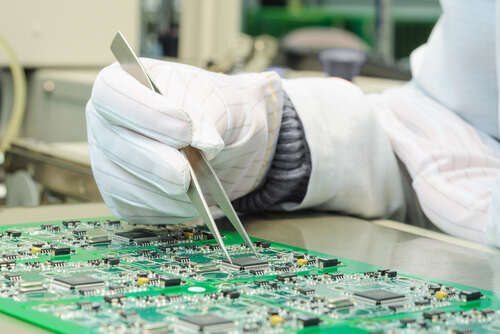
China is reportedly rethinking its semiconductor strategy in the face of tightening US sanctions, and is set to hand more power to leading chipmakers to help get around the restrictions, which have limited the supply of crucial components from abroad.

The Chinese government introduced a new Communist Party science commission and a revamped Ministry of Science and Technology last month, and will now work closely with a small group of semiconductor companies, which will have easier access to government subsidies and more say in the direction of state-backed R&D.
US sanctions relating to the chip industry have been ramping up since last year, with Washington putting export controls on advanced semiconductors, as well as chipmaking equipment, in a bid to ensure China cannot gain an advantage in emerging technologies such as artificial intelligence.
What is the new China semiconductor strategy?
China’s previous attempts to boost its domestic chipmaking capabilities have focused on large, and often poorly targeted, subsidies, according to people familiar with the situation who spoke to the FT, which first reported news of the revised strategy.
Tech Monitor has previously reported on plans by Beijing to invest $143bn in its semiconductor sector. This five-year plan, drawn up last year as US export controls started to bite, had a heavy focus on advanced manufacturing, with funding being made available for purchases of domestic semiconductor equipment for chip-producing foundries, known as fabs. Under the plan companies would have been entitled to a subsidy of up to 20% on the cost of equipment.
Now the government seems to have had a change of heart, and will instead empower a selected group of businesses to help boost Chinese chipmaking. These will include the country’s largest semiconductor business, SMIC, as well as Hua Hong Semiconductor and Huawei, along with equipment suppliers Naura and Advanced Micro-Fabrication Equipment Inc China.
The companies will be able to access additional government funding without having to meet stringent performance goals which have been previously attached to such grants. They will also have a bigger say in the direction of state-backed research projects, which are typically heavily influenced by state-run companies and universities.
“The Chinese government will subsidise these companies to produce and deploy localised chipmaking tools without any funding cap, just in order to overcome US restrictions,” a Chinese chip industry insider with knowledge of the plan told the FT.
China reacts to US chip sanctions
The US government has not only put restrictions on US companies such as Nvidia and AMD shipping advanced chips to China, but has also banned chipmaking equipment made by companies with any operations in the US. This includes ASML, the Dutch company which manufactures advanced lithography machines needed to produce leading-edge chips.
While Chinese companies such as SMIC are capable of producing semiconductors in large numbers on older process technology, their lack of access to ASML’s latest machinery means they are unable to match the work of Samsung and TSMC, the world’s biggest chipmakers which produce semiconductors on five-nanometre technology and which have both started rolling out a 3nm process, which offers more power and efficiency than ever before.
The US, Netherlands and Japan recently reached a trilateral agreement to further restrict chipmaking machines being sold to China, though details of which equipment is impacted by the deal are unclear.
But this means China is under pressure to boost its domestic industry. Speaking to Tech Monitor in October, John Lee, director of the East-West Futures consultancy and an expert on the Chinese digital economy, spelled out the size of the challenge facing Beijing. “The controls are potentially so wide-ranging and deleterious that the future course of Chinese industrial development, including that of multiple end-user industries that rely on semiconductors, is now in question.”






